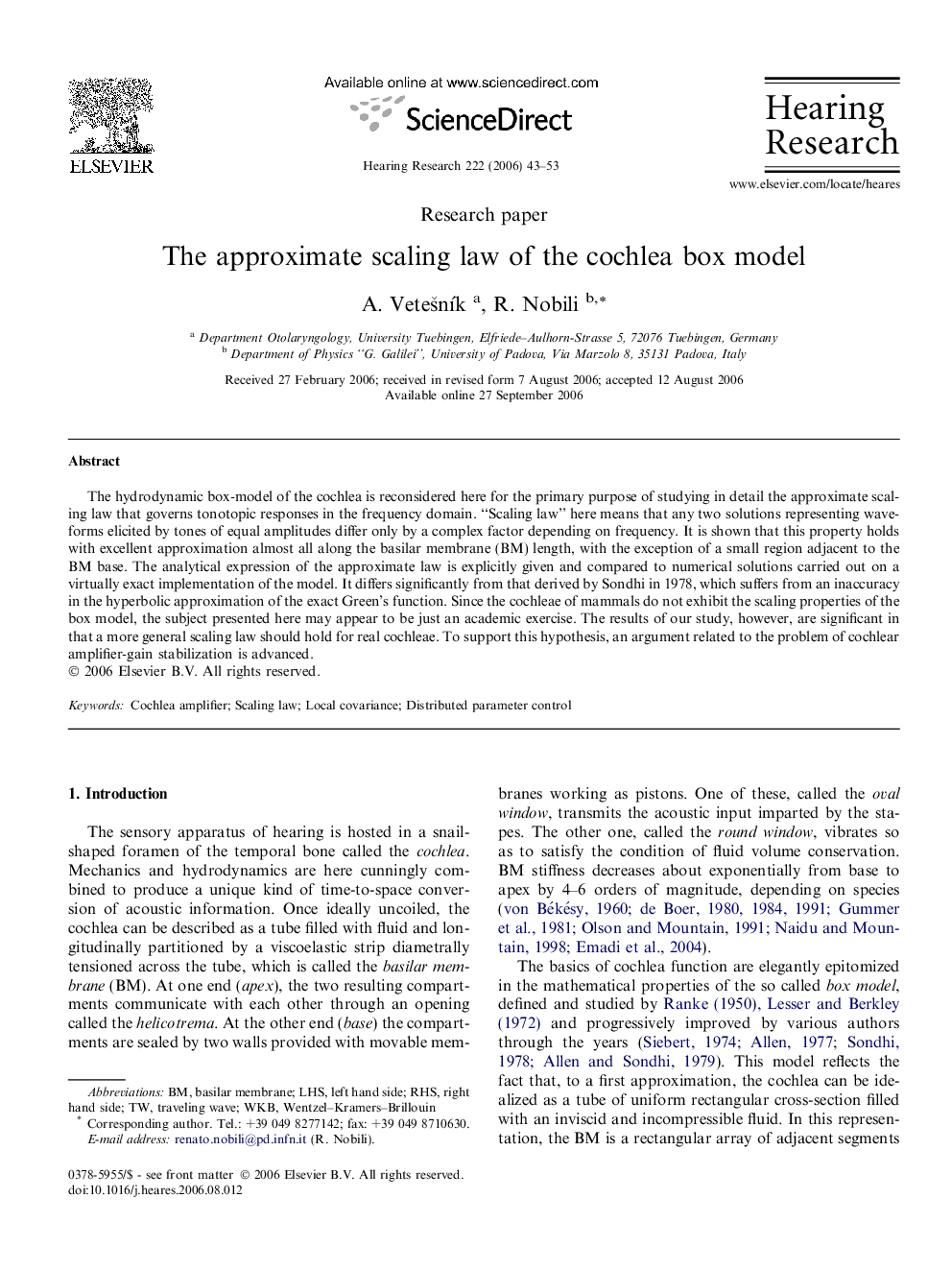| Article ID | Journal | Published Year | Pages | File Type |
|---|---|---|---|---|
| 4356393 | Hearing Research | 2006 | 11 Pages |
Abstract
The hydrodynamic box-model of the cochlea is reconsidered here for the primary purpose of studying in detail the approximate scaling law that governs tonotopic responses in the frequency domain. “Scaling law” here means that any two solutions representing waveforms elicited by tones of equal amplitudes differ only by a complex factor depending on frequency. It is shown that this property holds with excellent approximation almost all along the basilar membrane (BM) length, with the exception of a small region adjacent to the BM base. The analytical expression of the approximate law is explicitly given and compared to numerical solutions carried out on a virtually exact implementation of the model. It differs significantly from that derived by Sondhi in 1978, which suffers from an inaccuracy in the hyperbolic approximation of the exact Green's function. Since the cochleae of mammals do not exhibit the scaling properties of the box model, the subject presented here may appear to be just an academic exercise. The results of our study, however, are significant in that a more general scaling law should hold for real cochleae. To support this hypothesis, an argument related to the problem of cochlear amplifier-gain stabilization is advanced.
Related Topics
Life Sciences
Neuroscience
Sensory Systems
Authors
A. VeteÅ¡nÃk, R. Nobili,
